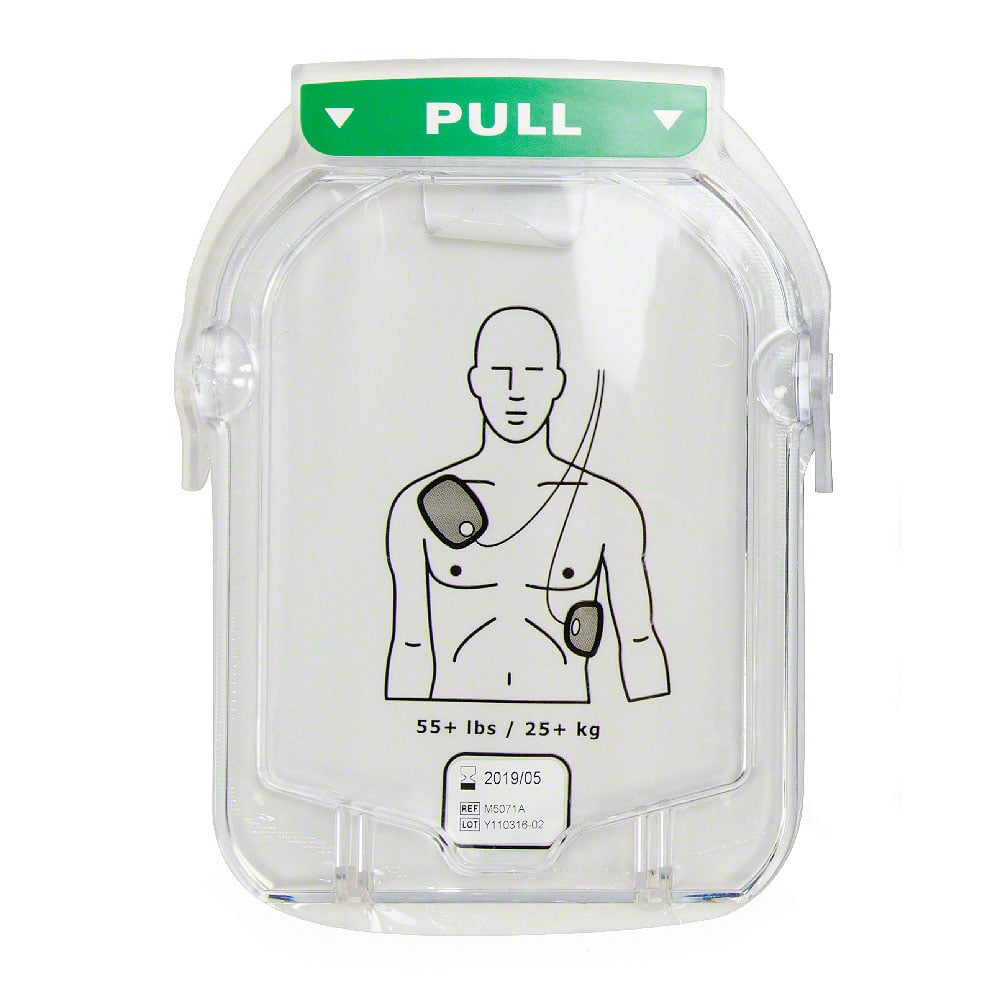Choosing an Automated External Defibrillator (AED) for a school or community center is a decision that carries significant weight. You’re not just buying equipment, you’re investing in the safety of students, staff, and visitors. The challenge is that the market is filled with options, and it’s difficult to know which features truly matter for a public environment where the first responder could be anyone from a school nurse to a volunteer parent.
This guide cuts through the noise. We’ll walk through the essential criteria for selecting an AED for your community, grounded in data and practical insights. We understand you need more than a product catalog, you need the confidence that you're making the best possible choice to protect every person on your campus.
Why the right AED is non negotiable for community spaces
The statistics surrounding Sudden Cardiac Arrest (SCA) are sobering, particularly for youth. SCA is the leading cause of death among student-athletes, and an estimated 7,000 to 10,000 young people die from it each year. When an AED is used, survival rates can soar as high as 70%, a dramatic increase from the 10% chance of survival without one.
However, the need extends far beyond students. Research published in the journal Circulation shows that the majority of cardiac arrests on school grounds happen to adults, the teachers, staff, and visitors who are the lifeblood of your community. An AED isn't just for the gym or athletic fields, it’s a critical safety tool for the entire campus.
Decoding the essentials what to look for in an AED
When evaluating AEDs for a school or community center, your priorities are different from those of a paramedic or a hospital. You need a device built for public access, meaning it must be simple, reliable, and ready for a layperson to use under immense pressure. Here are the key features to focus on.
Ease of use for untrained responders
In an emergency, there is no time to read a manual. The ideal AED for a public setting guides the user through every step. Look for devices with clear, calm voice prompts that tell the rescuer exactly what to do, from applying the pads to when to stand clear. Models like the Philips HeartStart OnSite AED are designed specifically for this purpose, with instructions that begin the moment the device is activated. The goal is to empower any bystander to become a confident first responder.
Pediatric capability
Because your environment includes children, pediatric capability is essential. AEDs deliver a powerful electrical shock, and the energy level must be reduced for a small child. You have two main options:
-
Pediatric pads:
These are smaller pads designed for a child’s chest. The AED recognizes them and automatically lowers the shock energy. -
Pediatric key or switch:
Some models, like the Philips HeartStart FRx, use a special key that, when inserted, switches the device into pediatric mode. This allows you to use the standard adult pads, which can simplify inventory and reduce panic in an emergency since you don't need to search for a different set of pads.
Understanding the difference is key. While both are effective, a key-based system can be more straightforward during a high pressure chaotic event.
Durability and resistance
A school or community center is a high-traffic environment. Your AED might be stored in a hallway, a gym, or a portable case for athletic events. It needs to withstand bumps, dust, and moisture. Look for the device’s IP (Ingress Protection) rating, which tells you how well it’s protected against solids and liquids. A higher rating, such as IP55, indicates a durable device like the rugged Defibtech Lifeline AED, which is built to handle the demands of public spaces.
CPR feedback
Effective CPR is just as critical as the shock from an AED. Many modern devices now include real-time CPR coaching. The AED will use voice and text prompts to guide the rescuer on the proper rate and depth of chest compressions. For example, some ZOLL AEDs provide feedback like "Push harder," ensuring the CPR being administered is as effective as possible until professional help arrives. This feature can make a life-or-death difference.
Maintenance and battery life
An AED is useless if it’s not ready to perform. Pay close attention to the lifespan and replacement costs of the battery and electrode pads. Some models, like the HeartSine Samaritan PAD 350P, combine the battery and pads into a single cartridge with one expiration date, simplifying maintenance. Considering the total cost of ownership, including replacement batteries and pads, is crucial for long term budget planning.
Top AED recommendations for schools and community centers
Based on the criteria above, certain models stand out for public access environments. While we can help you find the perfect AED for your specific needs, here are a few top contenders.
-
Best for simplicity:
Philips HeartStart OnSite AED Value Package -
Why it's a fit:
This device is renowned for its intuitive design and clear voice commands that guide a first-time user. It's lightweight, affordable, and perfect for organizations prioritizing ease of use above all else.
-
Best for mixed adult/child environments:
Philips HeartStart FRx AED Value Package -
Why it's a fit:
The FRx is exceptionally durable (IP55) and uses an optional infant/child key to switch to pediatric mode without changing pads, making it fast and foolproof in an emergency involving a child.
-
Best for low maintenance:
HeartSine Samaritan 350P AED Value Package -
Why it's a fit:
The innovative Pad-Pak combines the battery and pads into one cartridge with a single expiration date. This simplifies maintenance schedules and reduces the chance of having an expired component when you need it most.
Beyond the device cabinets signage and placement
Where you place your AED is just as important as which one you buy. The goal is to get the device to the victim’s side within three minutes of collapse. To achieve this, you need a clear placement strategy.
Install your AEDs in visible, accessible locations that are centrally located. Use clear AED wall signs to point the way. Include an AED guidance poster, with clear guidance with what to do in case of a cardiac arrest, in order to guide anyone through this high pressure situation. For security and protection, store the device in an alarmed wall cabinet. The alarm will sound when the door is opened, alerting others to the emergency and deterring theft or tampering. A well-marked and accessible AED program ensures no time is wasted during an emergency.
Understanding your legal and compliance obligations
Public Access Defibrillation (PAD) laws vary by state, but they all aim to encourage the placement and use of AEDs. According to the CDC, 29 states require a 9-1-1 call to be made when an AED is used, and 22 states require some form of AED registry. It's essential to check your local and state requirements to ensure your program is compliant.
This is where comprehensive AED program management becomes invaluable. Services like tools like the Response Ready App automate readiness checks, trackpad and battery expiration dates, and help you maintain full compliance without adding a burden to your staff.
Frequently asked questions
Q: How many AEDs does a school need?
A: A common guideline is the "three-minute rule." A person should be able to retrieve the AED and bring it to the victim's side within three minutes of collapse. This often means having an AED on each floor, in the gymnasium, at athletic fields, and in the nurse’s office. A site assessment can help determine the optimal number and placement for your specific layout.
Q: Do we need to train staff to use the AED?
A: While modern AEDs are designed for use by untrained bystanders, CPR and AED training is highly recommended. Training builds the confidence and muscle memory needed to act quickly and effectively under pressure. It transforms a group of individuals into a prepared emergency response team.
Q: What is the difference between adult and pediatric pads?
A: The main differences are size and the level of energy delivered. Pediatric pads are smaller to fit on a child's chest without touching and they tell the AED to deliver a weaker (attenuated) electrical shock appropriate for a child's body. Using adult pads on a child could deliver too much energy and cause harm.
Q: Are there grants available for schools?
A: Yes, many schools and community organizations successfully secure funding through local grants, community fundraising, or corporate sponsorships. While we do not provide grants directly, our team can offer guidance on pricing and provide official quotes needed for your grant applications. Our value packages are also designed to be an affordable, all-in-one solution.
Your partner in preparedness
At Response Ready, we're more than just an online AED superstore. With over a decade of expertise, we are your partners in building a life-saving program from the ground up. We provide expert guidance to help you select the right device, offer the training to prepare your team, and deliver the program management tools to ensure your AEDs are always ready.
If you’re ready to take the next step in protecting your community, explore our AEDs tailored for schools or contact our expert team today for a personalized consultation.






